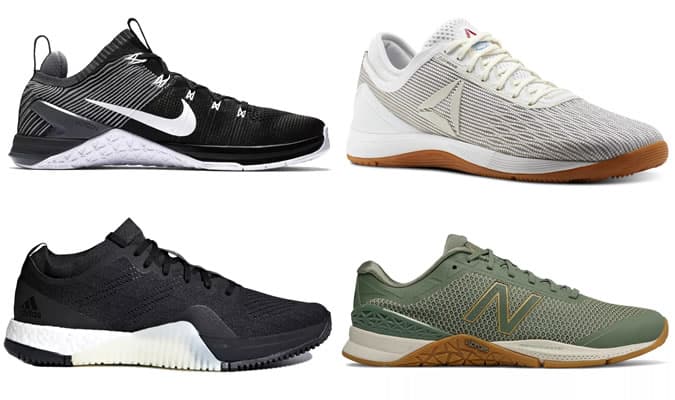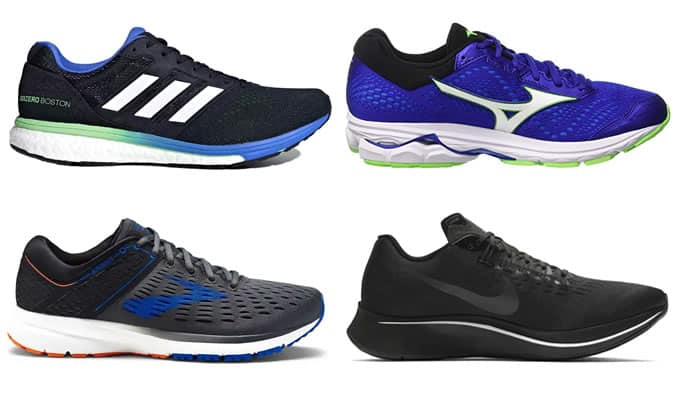Key Considerations When Buying Investing In New Gym Shoes - 5 minutes read
The battered runners at the bottom of your workout bag don’t cut it. Equally, the luxury sneaker trend promises all form and no function, making them close to useless in the gym. Thankfully, as health and wellness become an increasingly important part of people’s lifestyle, brands are doing all they can to keep pace. Are you chasing PBs under a heavy barbell? There’s the perfect shoe for you. A HIIT class fanatic? You’re covered. Training for your first marathon? You got it. And there’s added gains to be had from investing in new gym shoes, too. According to one 2012 study, looking and feeling the part in a fresh pair of kicks has tangible performance benefits. It’s called ‘enclothed cognition’ and means that pulling on a new set of lifters before hitting the squat rack will make smashing your goals a formality.
Key Considerations When Buying Gym Shoes
Workout Type
Gym shoes can generally be broken down into three categories: weightlifting, cross-training and running. Each of these types of workout places unique stresses on the body. The right gym shoe can protect you from those stressors, as well as provide an edge to your training that will supercharge your progress. If you’re lifting a barbell repeatedly you want a stable base. If you were to do the same exercise wearing knitted runners with a cushioned sole, you increase your risk of rolling an ankle and lose power to the soft foam. On the flip side, wearing a training shoe with a solid base is going to mean you miss out on a lot of energy return from the sole and slow you down during a 10K. Trainers today are specialist players, so play to their strengths.
Style
Ideally, your gym shoes should only be worn in the gym but, if time and space in your gym bag dictate, having a pair that crosses from gym floor to casual setting is a bonus. Thankfully, this is easier than ever before. The rise of athleisure means that most trainers now champion sleek designs and muted colours. Equally, if you’re stuck in clumpy-soled bumpers in a garish colourway, then you’re in luck, too. The ‘ugly’ trainer trend is now well-established and one you can happily embrace post-workout. Of course, they still need to do the business in the iron paradise. So prioritise function over form, and by today’s standards, you’ll likely look a whole lot cooler for it.
Fit
When it comes to gym shoes rather than Derbies, finding a pair that fit goes beyond simply buying the right size, so it pays to seek out a specialist. They will be able to advise on shoe selection based on your foot shape and function. If going it alone, the most important consideration is length. Go by ‘the rule of thumb’, especially when running distance in your footwear. Have at least a thumb’s width off of the end of your longest toe and the end of the shoe whenever you are running distances over 10km to avoid the loss of toenails or toe blisters. Following this method will usually mean buying shoes a whole size larger, but don’t be alarmed. Your feet move a lot in the shoes under pressure, as well as swell up. You’ll be glad of the breathing space.
The Best Gym Shoes For Cross-Training
A runner is built for straight-line speed, a weightlifting shoe creates a stable base under heavy loads and a cross-training shoe is the Jack of all trades. The rise and rise of functional fitness makes it increasingly important to have an all-encompassing shoe. It’s one shoe that is equally comfortable under a barbell as on a treadmill. Cross-training footwear is built to be durable but, most impressively, to give you traction and support in multiple directions. Only these shoes can keep up (and reduce your risk of injury) in the final throes of a sled pull and over-the-bar burpees superset. Think of them as the ultimate workout partner.

The Best Gym Shoes For Weightlifting
For health and safety reasons (among other things), we don’t suggest totting around the gym in a pair of stilettos, but sloping angles do have a purpose. The best lifters are extremely solid with a high heel. They’re ideal for lifting big numbers, but also the new versions often come with a knitted upper, which helps them to still feel flexible and light. By raising the heel, it reduces your need for ankle mobility. This means you can sink easily into a deep squat that not only makes complicated Olympic lifting techniques easier to master, but will also allow you to activate more muscle tissue in your legs to help you make gains more quickly. If you’re looking for an All-Star choice that crosses more easily from lifting platform to day-to-day, research states that the flat sole and tight-laced ankle support of a Chuck Taylor Hi-Top is also one of the most effective shoes under a heavy load. And they weigh in at a fraction of the price, too.

The Best Gym Shoes For Running
A good running shoes are made with an upper that makes your foot feel secure and locked in. Is like the analogy of locking the foot down like a seatbelt. You want it tight but not totally restrictive of movement – you want to be able to run without too much movement, including when you’re running around corners. Overall shoe fit should be well-held around heel and midfoot. In the forefoot, you want to have enough space to wiggle your toes and avoid those aforementioned lost toenails. Rather than fussing over trending buzzwords like ‘energy return’, the most important thing to consider in a running shoe will always be comfort. Distance running involves eating up miles, and that takes time. Looking after the tools of your trade (that’s your feet, by the way) during this pounding will pay dividend come race day.
